Potrebujeme váš súhlas na využitie jednotlivých dát, aby sa vám okrem iného mohli ukazovať informácie týkajúce sa vašich záujmov. Súhlas udelíte kliknutím na tlačidlo „OK“.
ASTM F1223-14
Standard Test Method for Determination of Total Knee Replacement Constraint
Automaticky preložený názov:
Štandardná skúšobná metóda pre stanovenie celkového Knee Replacement CONSTRAINT
NORMA vydaná dňa 15.5.2014
Informácie o norme:
Označenie normy: ASTM F1223-14
Poznámka: NEPLATNÁ
Dátum vydania normy: 15.5.2014
Kód tovaru: NS-49557
Počet strán: 9
Približná hmotnosť: 27 g (0.06 libier)
Krajina: Americká technická norma
Kategória: Technické normy ASTM
Kategórie - podobné normy:
Anotácia textu normy ASTM F1223-14 :
Keywords:
arthroplasty, constraint, joint, laxity, prosthesis, total knee replacement, ICS Number Code 11.040.40 (Implants for surgery, prothetics and orthotics)
Doplňujúce informácie
| Significance and Use | ||||
|
4.1 This test method, when applied to available products and proposed prototypes, is meant to provide a database of product functionality capabilities (in light of the suggested test regimens) that is hoped will aid the physician in making a more informed total knee replacement (TKR) selection. 4.2 A proper matching of TKR functional restorative capabilities and the recipient's (patient’s) needs is more likely to be provided by a rational testing protocol of the implant in an effort to reveal certain device characteristics pertinent to the selection process. 4.3 The TKR product designs are varied and offer a wide range of constraint (stability). The constraint of the TKR in the in vitro condition depends on several geometrical and kinematic interactions among the implant's components which can be identified and quantified. The degree of TKR's kinematic interactions should correspond to the recipient's needs as determined by the physician during clinical examination. 4.4 For mobile bearing knee systems, the constraint of the entire implant construct shall be characterized. Constraint of mobile bearings is dictated by design features at both the inferior and superior articulating interfaces. 4.5 The methodology, utility, and limitations of constraint/laxity testing are discussed.3, 4 The authors recognize that evaluating isolated implants (that is, without soft tissues) does not directly predict in vivo behavior, but will allow comparisons among designs. Constraint testing is also useful for characterizing implant performance at extreme ranges of motion which may be encountered in vivo at varying frequencies, depending on the patient’s anatomy, pre-operative capability, and post-operative activities and lifestyle. |
||||
| 1. Scope | ||||
|
1.1 This test method covers the establishment of a database of total knee replacement (TKR) motion characteristics with the intent of developing guidelines for the assignment of constraint criteria to TKR designs. (See the Rationale in 1.2 This test method covers the means by which a TKR constraint may be quantified according to motion delineated by the inherent articular design as determined under specific loading conditions in an in vitro environment. 1.3 Tests deemed applicable to the constraint determination are antero-posterior draw, medio-lateral shear, rotary laxity, valgus-varus rotation, and distraction, as applicable. Also covered is the identification of geometrical parameters of the contacting surfaces which would influence this motion and the means of reporting the test results. (See Practices E4.) 1.4 This test method is not a wear test. 1.5 The values stated in SI units are to be regarded as standard. No other units of measurement are included in this standard. 1.6 This standard does not purport to address all of the safety concerns, if any, associated with its use. It is the responsibility of the user of this standard to establish appropriate safety and health practices and determine the applicability of regulatory limitations prior to use. |
||||
| 2. Referenced Documents | ||||
|
Podobné normy:
Historická
1.8.2008
Historická
1.2.2008
Historická
1.5.2013
Historická
1.10.2013
Historická
1.9.2013
Historická
1.3.2013
Odporúčame:
Aktualizácia technických noriem
Chcete mať istotu, že používate len platné technické normy?
Ponúkame Vám riešenie, ktoré Vám zaistí mesačný prehľad o aktuálnosti noriem, ktoré používate.
Chcete vedieť viac informácií ? Pozrite sa na túto stránku.


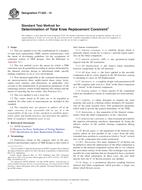
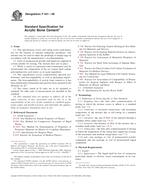 ASTM F451-08
ASTM F451-08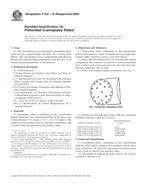 ASTM F452-76(2008)..
ASTM F452-76(2008)..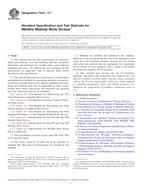 ASTM F543-13e1
ASTM F543-13e1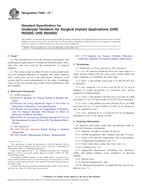 ASTM F560-13e1
ASTM F560-13e1 ASTM F561-13
ASTM F561-13 ASTM F562-13
ASTM F562-13
 Cookies
Cookies
